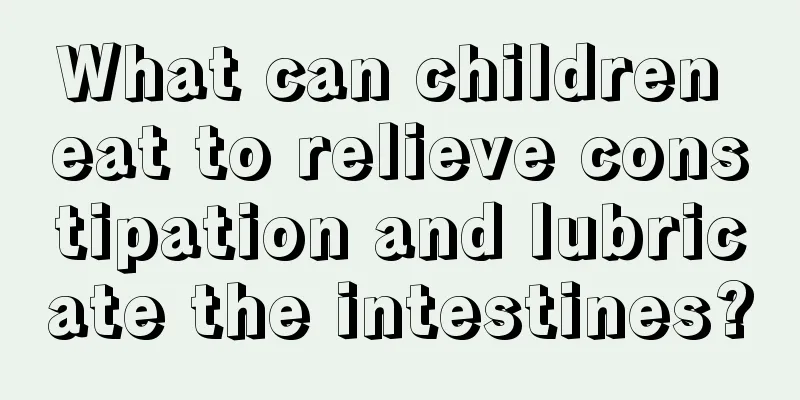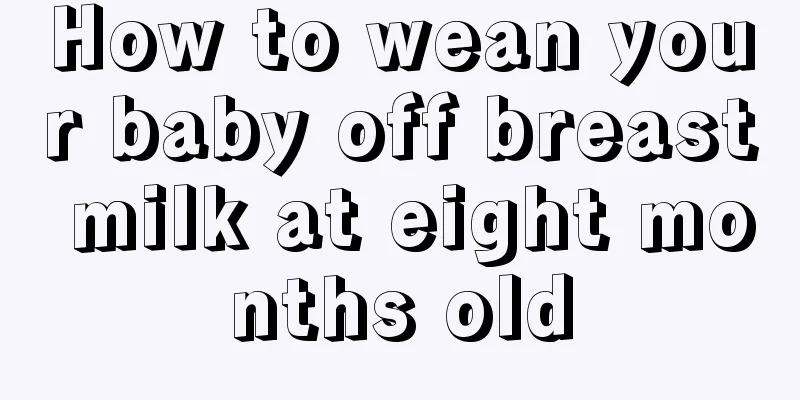What are the methods to remove baby's tongue coating?

|
Tongue coating is a white substance that exists on the baby's tongue. In order to ensure the baby's oral health and reduce the occurrence of various oral diseases, parents can remove the baby's tongue coating through certain methods. Specific removal methods include: drinking warm water to rinse your mouth, gauze care, using silicone brushes on your teeth, massaging in a clockwise direction, eating light and nutritious food, etc. Let me give you a detailed introduction below! 1. Rinse your mouth with warm water (first choice) As long as you give your baby some warm water to rinse his mouth after drinking milk, he will be less likely to have a coating on his tongue. In addition to cleaning your baby's mouth, drinking water can also dilute the lactic acid in the mouth and reduce the growth of bacteria. 2. Gauze care When the tongue coating is thicker, it needs to be handled manually. Take a piece of sterilized gauze of about 4×4 specifications, wrap it around the mother's index finger, moisten the gauze with some warm water, and then insert it into the baby's mouth. Gently wipe the milk residue on the inside of the baby's cheeks and tongue. Remember not to wipe too close to the root of the tongue, otherwise it will easily cause the baby to vomit. 3. Use silicone brushes to brush teeth There are many silicone teeth brushes designed for new parents on the market that can also help clean the baby's tongue and mouth. The silicone toothbrush cap looks like a toothbrush and can be put on the finger to help the baby brush his teeth and tongue. But please note that because the baby's tongue is soft and tender, you should brush it gently and not too hard to avoid hurting the baby's tongue. 4. Massage in clockwise direction This method is the simplest and easiest to operate. Parents can place their hands tightly on the baby's belly and gently massage in a clockwise direction. The clockwise direction is the same as the direction of intestinal peristalsis. This helps increase the digestive capacity of the intestines, but you must pay attention to the strength, observe the baby's reaction, and do not hurt the baby. 5. Eat light and nutritious food For babies who are exclusively breastfed, the mother's diet should be light and nutritious, and ensure a balanced diet. The mother should eat more vegetables, fruits, and whole grains, drink more water or porridge, and have an appropriate amount of soup so that the baby can better absorb the nutrients of breast milk. If the baby who is eating formula milk is always accompanied by symptoms such as getting angry, constipation, or diarrhea, it is recommended to change to other brands of formula milk. In addition, you can give your baby some fruit and vegetable juice. They supplement vitamins and fiber. Fruit and vegetable juice are delicious and babies are more likely to accept them. Do not feed your baby with rice soup, rice paste or milk cakes, which are difficult for the baby to digest and absorb. The baby's gastrointestinal development is not yet complete. Adding excessive complementary foods too early will increase the burden on the intestine and cause adverse reactions such as diarrhea. |
<<: What should I do if my baby has white spots on his breasts?
>>: When does a baby start to have constipation?
Recommend
What are the symptoms of precocious puberty in boys?
Under normal circumstances, boys will not show se...
What to do if your 3-year-old baby stutters
When the baby is just starting to learn to speak,...
How to educate children in rebellious period
The most headaches for parents are when their chi...
Your child has a cold and repeated fever. Do you know why?
Some children catch colds and have fevers very ea...
What should I do if my child has umbilical hernia?
Many children will have umbilical hernia after bi...
Where do children come from?
When we were very young, we always asked our pare...
What to do if your newborn hiccups
For many new parents, the arrival of a baby often...
Two-year-old baby diet plan
When the baby is still in the cradle, the baby ca...
What causes children's poor memory?
If a child has a poor memory, parents will also w...
How to coax a baby to fall asleep quickly
How to make the baby fall asleep quickly is a hea...
Some reasons why babies keep hiccuping
My child was always hiccuping when he was one or ...
What are the symptoms of infant choking on trachea and lungs?
Infancy is the most important time to pay attenti...
Baby's runny nose in summer
Parents all pay great attention to the physical h...
Child loses his voice
In our lives, there are many children who may los...
Why do babies always suck their fingers?
A baby is a new life in this world and a fragile ...









